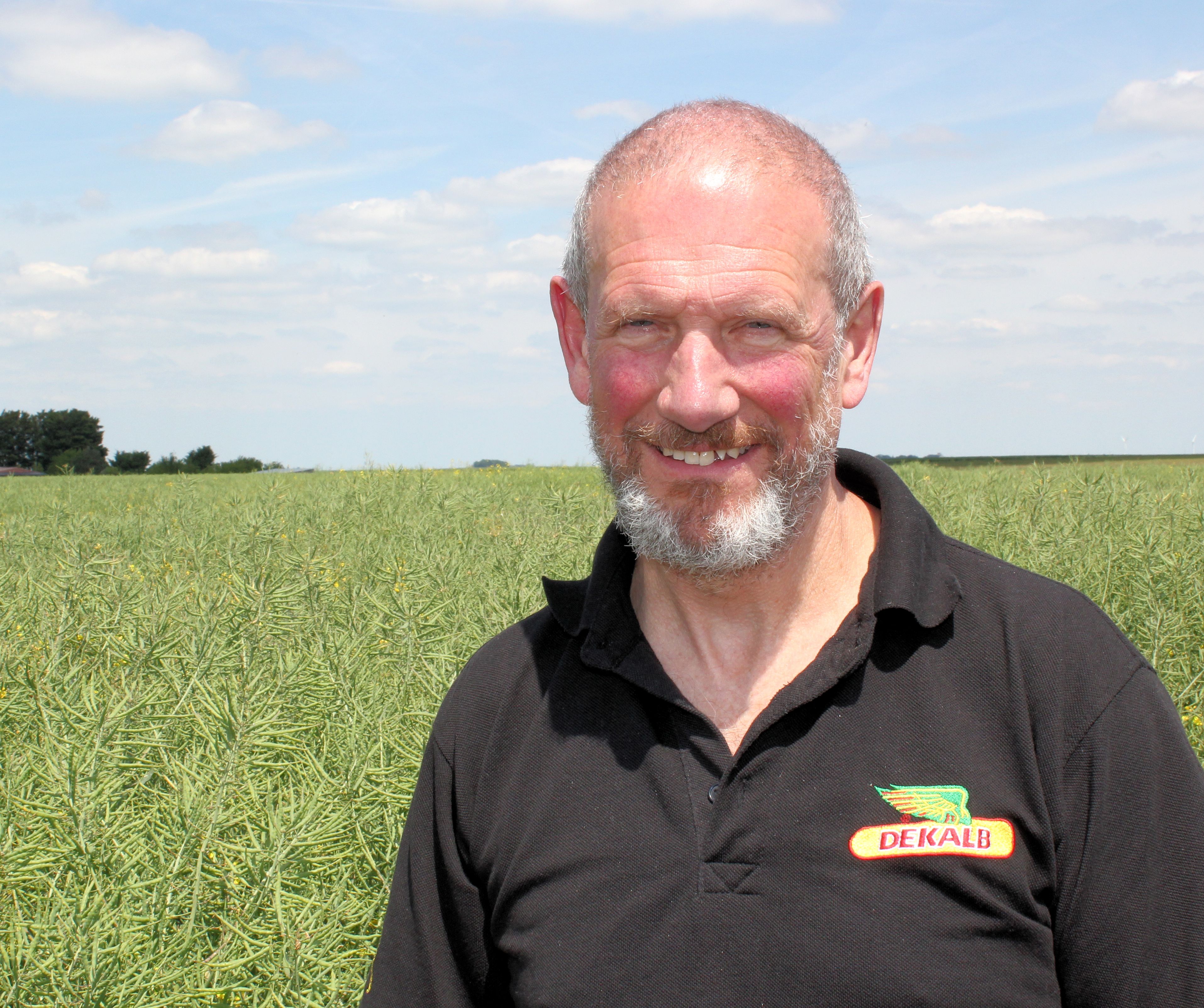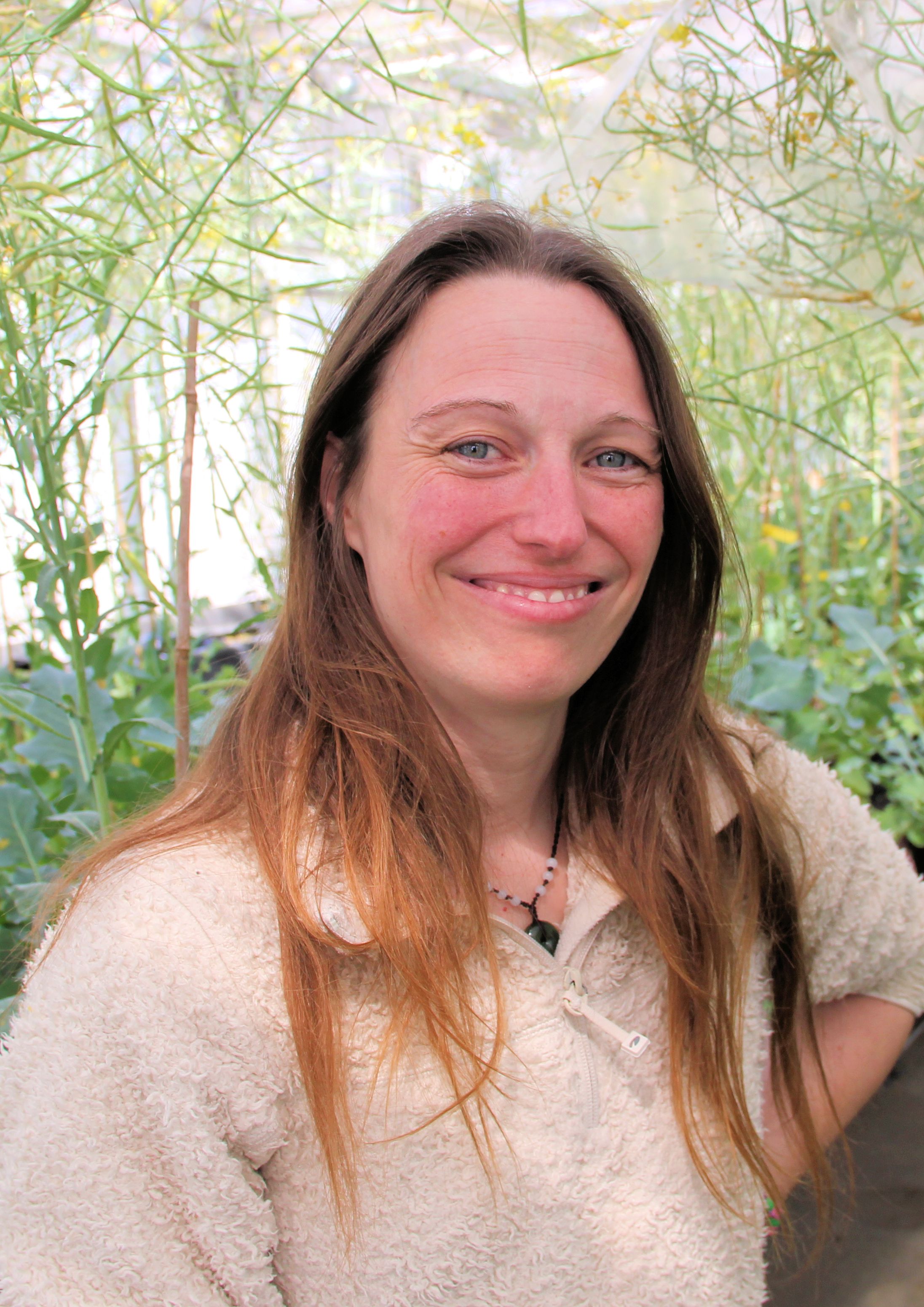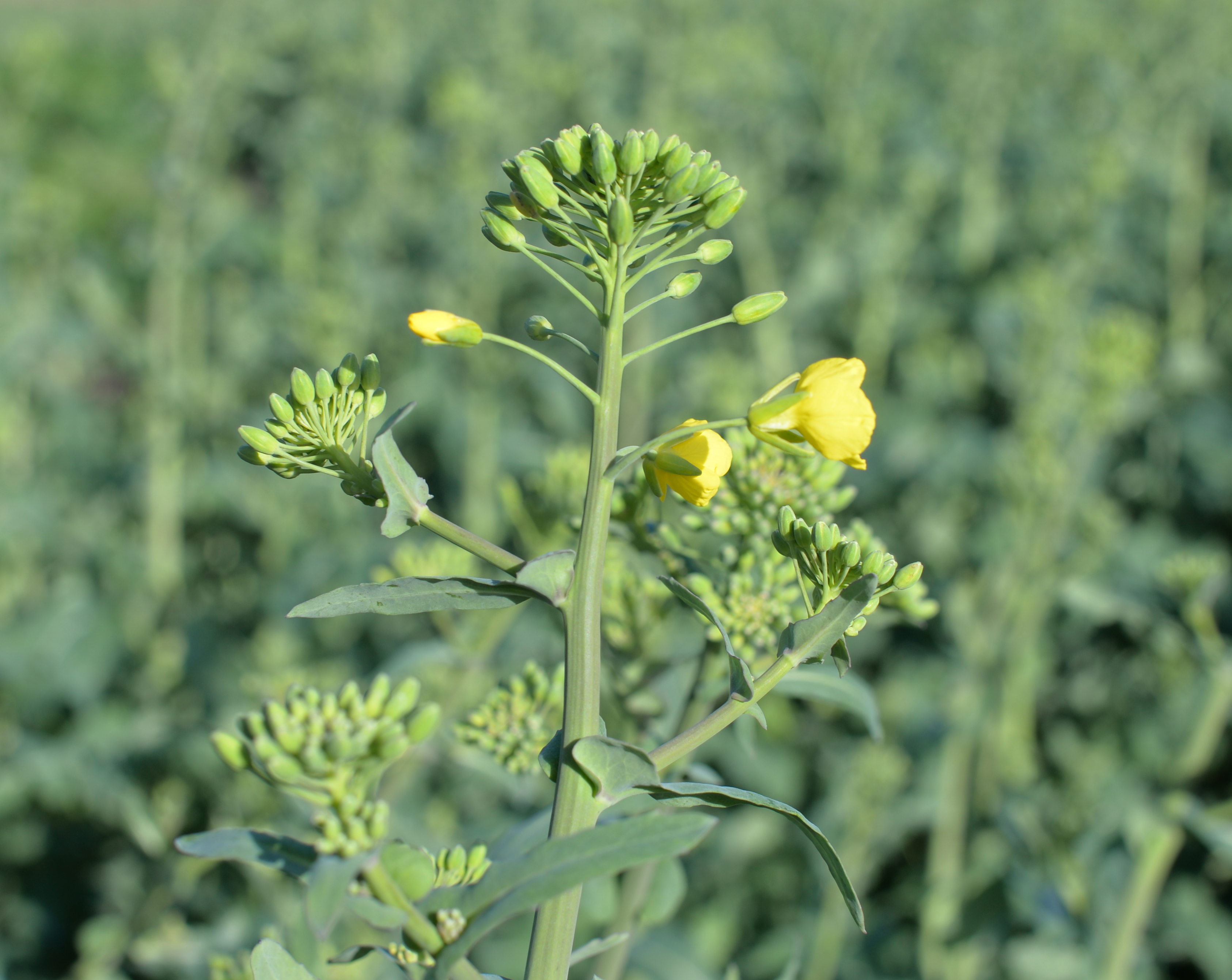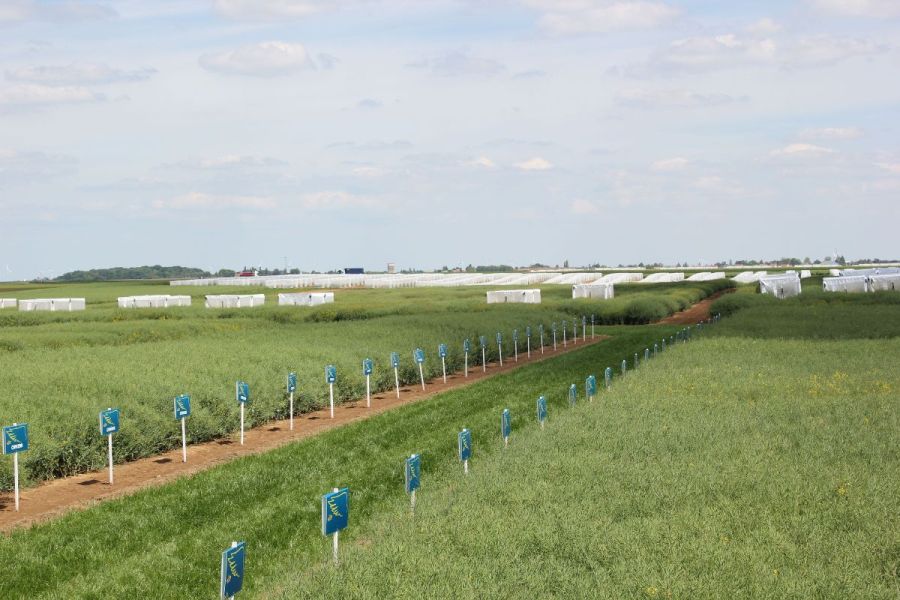Modern technologies are opening the door for plant breeding to play an increasingly important role in bringing much-needed extra environmental stability to oilseed rape growing. CPM explores some of the latest genetic thinking to answer this particular maiden’s prayer.
The important thing from a breeding point of view is the considerable variation we’re seeing between different genetics.
By Lucy de la Pasture
Over the past 20 years marker-assisted selection has enabled oilseed rape breeders to make great progress in introducing a succession of yield-protecting traits – like double phoma, pod shatter and TuYV resistance – into the crop to reduce its vulnerability to particular production challenges.
At the same time, advanced hybrid breeding has enabled these traits to be rapidly and reliably combined with one another alongside steady improvements in yield and quality.
Improving combinations of more complex characters like tolerance to climatic stresses, however, has proved more difficult. Governed by many genes in different locations, each with relatively small and quite different effects, they are far less responsive to the individual marker approach. And while traditional selection under high stress environments can be valuable, progress is invariably much slower, says Dekalb breeder Matthew Clarke.
Enter genome-wide selection, employing artificial intelligence supported by the dramatic pace of recent improvements in genetic mapping and data processing – not to mention new technologies for analysing information from the field.
“In the past the primary focus was on identifying which parts of the chromosome were significantly associated with key traits and fixing these in our parent lines so we could reliably combine them into restored hybrids,” recalls Matthew.
“But with genome-wide selection we’re turning this on its head. We start by genetically profiling our best-performing varieties in different environments to identify whole blocks of their genome that are distinctively associated with the resilient performance we need, including the hybrid vigour unique to them.
“Knowing what we’re looking for, we then actively seek these blocks of genes in our parent lines using sophisticated models that estimate, with considerable accuracy, the breeding value of parents for the outcomes we want. This approach moves us from selecting the best to designing the best,” he claims.
“We see it making a particularly big impact on improving the reliability of OSR growing in the coming decade, while significantly accelerating rates of yield and oil quality improvement.”
Matthew’s enthusiasm for the opportunities today’s technologies offer is shared by UK researchers seeking to improve the reliability, yield and quality of OSR by better understanding the genetics of the crop’s response to different seasonal and environmental influences in the BBSRC-funded BRAVO project.

Matthew Clarke sees genome-wide selection as the route to improving the reliability of OSR, while accelerating rates of yield and oil quality improvement.
BRAVO – short for Brassica, Rapeseed and Vegetable Optimisation – brings together the John Innes Centre (JIC) and Rothamsted Research with the Universities of Aberystwyth (Institute of Biological, Environmental and Rural Sciences), Nottingham, Warwick and York and industry specialists, including Bayer.
“Our primary focus is on finding ways of making OSR and other important brassica crops more resilient to the changing climate,” explains John Innes Centre-based BRAVO project manager, Dr Rachel Wells.
“To do this we’re unravelling the genetics behind a number of key plant development stages and identifying the opportunities they offer for improving performance stability; especially so under the warmer and more extreme climatic conditions we’re promised by environmental scientists.
“Up to now, most breeding has concentrated on the most responsive varieties for maximum potential under the best conditions. But what we really need for stability is varieties that perform well overall but are less responsive to environmental changes,” she explains.
“These may not give us the greatest output in the good years and at the highest levels of input. Importantly though, they won’t let us down in the bad ones or where economics or other factors mean sub-optimal inputs.”
Analysing 25 years of UK-wide winter OSR yield data from 1990 and 15 years of AHDB Recommended List trials alongside comprehensive Met Office records, JIC researchers led by Prof Steve Penfield have identified late autumn and early winter temperature variation as having one of the greatest climatic influences on crop yield instability. This work has also highlighted useful variation between commercial varieties in their performance stability.
“Unfortunately, given the milder winters we’re seeing, this and our current field-scale soil warming trials are showing that lower temperatures in late November and early December are what we need for the best winter OSR crop performance,” reports Steve.
“As a winter crop requiring vernalisation, this isn’t surprising. And it’s clearly linked to the promotion of floret initiation in the transition from vegetative to reproductive growth. At this time OSR enters a dormant stage in its development, crucial for its canopy architecture and performance, with temperature an important factor in its onset.
“There’s little, if anything, we can do about the climate. However, just as we recognise varieties have valuable differences in both their establishment vigour and speed of autumn development, we know they also vary in timing of their floret initiation – or, perhaps more accurately, the degree of chilling required to bring it on,” he explains.
“For the best performance and stability, we want crops that more reliably go into dormancy in the mid-November ‘Goldilocks Zone’. If they transition too early, they can be poorly rooted with small stem diameters, making plants more vulnerable to stresses like lodging and drought. Equally, too late a transition means over-development, greater vulnerability to winter stresses and too much ‘leafiness’ and not enough ‘seediness’ during canopy development.
“As well as getting this balance right, in our experience we also want varieties that keep their growing points closer to the ground over the winter, are relatively short in their stature, branch from lower down on the stem and grow away as rapidly as possible in the spring,” adds Steve.
“In all these respects we’re big fans of Castille, which is one of the key parents in our current screening trials seeking genetics with the greatest stress tolerance. It’s no coincidence that this variety stood out as the most yield stable and least winter temperature sensitive of all 29 varieties in our AHDB RL trials analysis.
“Between the years with the highest and lowest December temperatures, our work suggested an average Castille yield variation of less than 800kg/ha compared with the 2.0t/ha of the most temperature sensitive variety.”
Other important transitions researchers are exploring in the BRAVO work are those involved in the production of reproductive tissues – both pollen and ovules – and seed vigour. The focus here is on understanding the genetics governing the processes and the opportunities for improving environmental robustness. And again, it’s revealed useful genetic variation.
“The resolution in genetic sequencing these days is giving us much greater potential to work with more quantitative traits, like tolerance to climatic and other environmental stresses,” points out Rachel.
“At the same time, the tools we have today are allowing us to measure variations in the field so much more precisely. While we used to record the start and finish of flowering by eye, for instance, we’re now able to characterise different genetics by whole flowering curves plotted through remote sensing. Relating flowering performance under a range of vernalisation and maturation temperatures to specific genotypes is enabling us to really understand what makes for more resilient OSR.”
At the moment, the BRAVO team can’t define the specific flowering traits making for the most resilient crop. They feel that earlier flowering varieties more tolerant to frost may be advantageous in allowing the longest possible pod-filling period with the least vulnerability to high summer temperatures and drought. But this is only one of the hypotheses they’re exploring.

In BRAVO, the primary focus is on finding ways of making OSR and other important brassica crops more resilient to the changing climate, says Rachel Wells.
“The important thing from a breeding point of view is the considerable variation we’re seeing between different genetics,” says Rachel. “Our Nottingham BRAVO team member, Alison Tidy, has shown the pollen viability of some lines is noticeably less affected by cold or heat than others. In the same way, Laura Siles-Suarez at Rothamsted has shown there’s plenty of variation between lines in ovule number, early pod abortion and seed development.
“As we define the flowering and other developmental characteristics giving the greatest climatic tolerance, this means we can direct breeding towards the most appropriate genetics to deliver it,” she says.
“In parallel to this, our work at JIC and Rothamsted continues to identify genetics showing greater tolerance to both cabbage stem flea beetle grazing and larval development, which can help to reduce this particular risk. Equally, it’s good to see the extent to which pod shatter resistance has become mainstream in recent years, following our identification of the genetics under-pinning it all those years ago.”
Both Steve and Rachel see these and other current advances in genetic understanding offering particular potential to build extra resilience into winter OSR, whether through reduced sensitivity to key stresses or a great ability to recover from them.
They emphasise, though, that wider selection under challenging field conditions by breeders across a wide geography remains a vital component in achieving this, together with a refocussing of national trial work to place greater emphasis on robustness rather than simple output maximisation.

Work at John Innes Institute has found late autumn and early winter temperature variation as having one of the greatest climatic influences on crop yield instability, says Steve Penfield.
Matthew bases all his Dekalb variety development work on completely untreated breeding and selection trials, run across a huge range of stress situations in a wide UK and European geography, so he couldn’t agree more.
“We continue selecting and testing all our emerging hybrids without any crop protection support right thorough to their NL2 stage of development,” he says. “What’s more, we deliberately do so in situations known to present particular disease, pest and other environmental challenges.
“While they may not look as impressive as many in maximum-output National and RL trials, this allows us to only bring forward hybrids we’re confident have the underlying genetic strength to perform consistently well in the field for their particular environments,” comments Matthew.
“Testing across the widest range of environments also enables us to identify varieties that perform equally strongly under the continental climates of Germany and France, the ultra-continental climates of Poland and Hungary and the more maritime conditions of the UK, Denmark and Sweden.
“This gives us great confidence they’re as tolerant as they can be to a broad range of environmental stresses – including winter cold and summer drought – as well as disease and viral pressures beyond those to which they carry known resistance.”
A classic case of this is the superior tolerance to nutrient stress shown by the latest high reliability Dekalb hybrids, he believes.
Replicated 2020/21 trials undertaken with four top-performing TuYV-resistant hybrids showed mean gross outputs falling from 4.84t/ha to 4.61t/ha when nitrogen applications were cut from 180kg/ha to 140kg/ha – an average gross output reduction of 0.23t/ha.
Both widely-grown DK Excited and RL candidate DK Exposé lost less than half this gross output at 0.09t/ha and 0.11t/ha respectively, together with a quarter that of the 0.44kg/ha lost by the variety least tolerant to nitrogen reductions. In doing so, they follow in the footsteps of a number of Dekalb hybrids introduced since DK Exception – the first variety to emerge from the breeder’s restricted-nitrogen development programme in 2016.

Researchers are now able to characterise different genetics by whole flowering curves plotted through remote sensing.
Very much in line with JIC’s experience, much of the superior environmental stress tolerance the Dekalb programme has built into its hybrids over the years is considered to be related to their greater branching ability, in general, and branching from lower down the stem, in particular, believes Matthew.
Steve’s view is that the work being done at JIC, and across the wider BRAVO network, is revealing the genetic fundamentals behind the way brassicas respond to the most important environmental triggers.
“Marry this understanding with today’s genetic technologies and I’m confident our industry will be able to breed much greater tolerance to important climatic, as well as pest and disease stresses, into OSR in the coming decade.”
He hastens to add that no genetics can completely protect the crop from climatic shocks like the Beast from the East at especially vulnerable stages in their development.
At the same time, all the specialists point out that the right agronomy is essential to allow genetics to do its job. Varieties that develop and branch better will only be able to do so if they’re not planted too densely in the first place. This has to make variety-specific agronomy an increasingly important essential in reducing OSR risks, concludes Matthew.
De-risking OSR
Oilseed rape looks a much more attractive proposition this autumn with rapeseed prices set to remain firm and CSFB less of an issue than it has been. Following on from last season’s Battling the Beetle series, which explored strategies to combat the threat of cabbage stem flea beetle, CPM has again teamed-up with Bayer to take a more holistic look at removing some of the undoubted risks associated with growing OSR through agronomy, genetics and marketing.
Part of Bayer’s role is providing trusted support to OSR growers and their agronomists that goes well beyond the robust and dependable varieties that have always been the Dekalb trademark. We hope this helps everyone improve the reliability of their cropping to take the greatest possible advantage of the excellent opportunities for OSR in the rotation.
This article was taken from the latest issue of CPM. For more articles like this, subscribe here.




